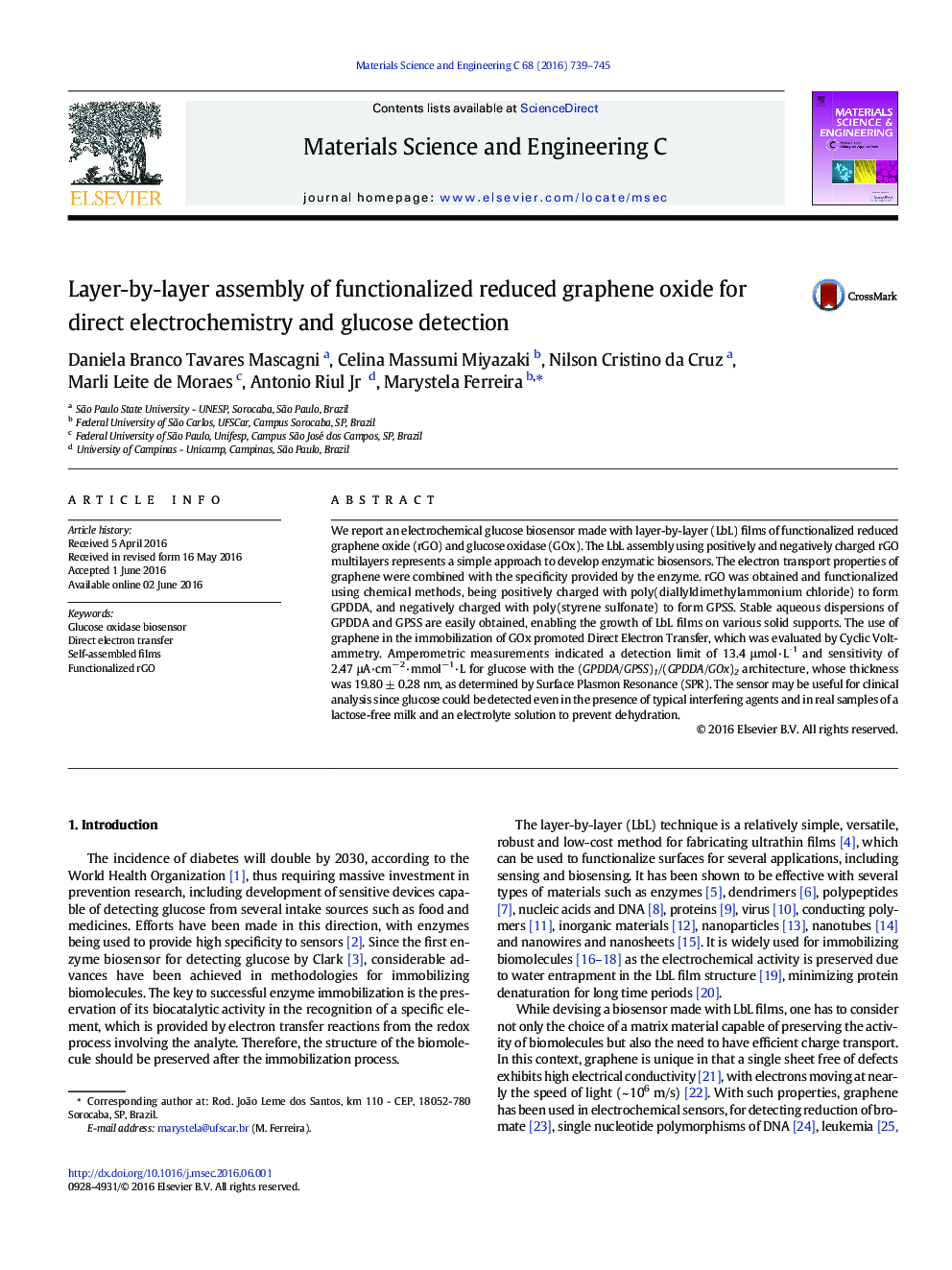| Article ID | Journal | Published Year | Pages | File Type |
|---|---|---|---|---|
| 7867387 | Materials Science and Engineering: C | 2016 | 7 Pages |
Abstract
We report an electrochemical glucose biosensor made with layer-by-layer (LbL) films of functionalized reduced graphene oxide (rGO) and glucose oxidase (GOx). The LbL assembly using positively and negatively charged rGO multilayers represents a simple approach to develop enzymatic biosensors. The electron transport properties of graphene were combined with the specificity provided by the enzyme. rGO was obtained and functionalized using chemical methods, being positively charged with poly(diallyldimethylammonium chloride) to form GPDDA, and negatively charged with poly(styrene sulfonate) to form GPSS. Stable aqueous dispersions of GPDDA and GPSS are easily obtained, enabling the growth of LbL films on various solid supports. The use of graphene in the immobilization of GOx promoted Direct Electron Transfer, which was evaluated by Cyclic Voltammetry. Amperometric measurements indicated a detection limit of 13.4 μmol·Lâ1 and sensitivity of 2.47 μA·cmâ2·mmolâ1·L for glucose with the (GPDDA/GPSS)1/(GPDDA/GOx)2 architecture, whose thickness was 19.80 ± 0.28 nm, as determined by Surface Plasmon Resonance (SPR). The sensor may be useful for clinical analysis since glucose could be detected even in the presence of typical interfering agents and in real samples of a lactose-free milk and an electrolyte solution to prevent dehydration.
Related Topics
Physical Sciences and Engineering
Materials Science
Biomaterials
Authors
Daniela Branco Tavares Mascagni, Celina Massumi Miyazaki, Nilson Cristino da Cruz, Marli Leite de Moraes, Antonio Jr, Marystela Ferreira,
